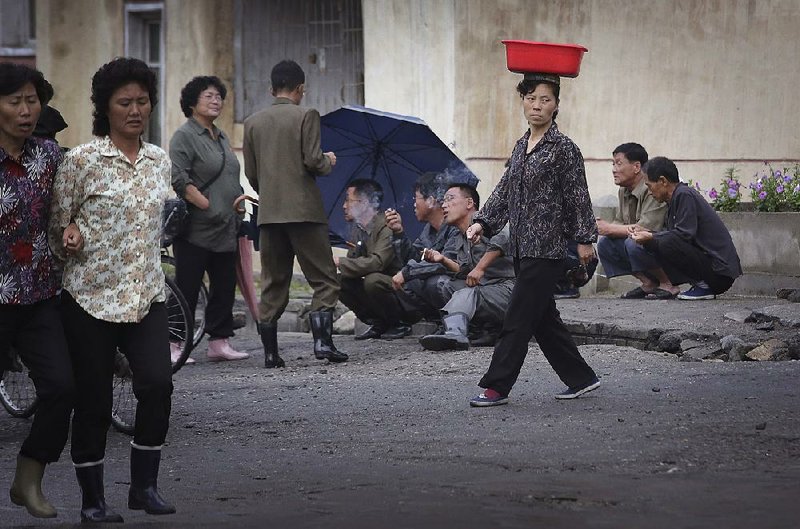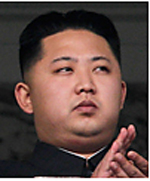SEOUL, South Korea -- North Korea's launch of an intermediate-range ballistic missile into high altitude Wednesday demonstrated that the country was making progress after a series of failures in the past two months, South Korean analysts said.
The projectile, a Musudan missile, took off from Wonsan, a port city east of Pyongyang, the North Korean capital, and flew about 250 miles over the sea between North Korea and Japan, South Korea's Office of Joint Chiefs of Staff said in a statement.
The North's Korean Central News Agency quoted leader Kim Jong Un as saying the launch now gives his country the "sure capability to attack in an overall and practical way the Americans in the Pacific operation theater."
Although the missile fell far short of its estimated full range of more than 2,000 miles, the test is the first for the Musudan that was not immediately dismissed as a failure by the United States or South Korea.
South Korea said that in the North's previous five Musudan tests, including one earlier Wednesday, the projectiles all crashed into the sea or exploded in midair soon after liftoff.
The progress the North demonstrated with its sixth test was disconcerting enough for South Korea to convene a meeting of top security-related ministers later Wednesday to discuss the growing missile and nuclear threats.
Jeong Joon-hee, a spokesman for the South Korean government, called the launch a "clear provocation" that violated U.N. Security Council resolutions banning the North from developing ballistic missile technology.
In Washington, John Kirby, a State Department spokesman, said the United States strongly condemned the tests and intended to discuss the North's prohibited activities at the Security Council.
"This missile launch, like previous ones, is a clear violation of United Nations resolutions," said Shinzo Abe, prime minister of Japan. "We cannot tolerate it and have protested firmly."
The U.N. Security Council had an emergency meeting late Wednesday on the launches, and U.S. Ambassador Samantha Power called for "urgent and united condemnation." French Deputy U.N. Ambassador Alexis Lamek, whose country holds the council presidency, told reporters after the meeting that the council intends to react quickly and express opposition to the launches, which violate Security Council resolutions banning ballistic missile tests.
Chinese Foreign Ministry spokesman Hua Chunying said China, North Korea's longtime ally, didn't consider the missile launches to be an act of defiance against Beijing.
"To say such an act taken by North Korea shows disapproval against China is reading too much into it," Hua said at a news conference.
The Japanese Defense Ministry said it believed that the test showed that the North's missile technology was advancing.
South Korean analysts said North Korea appeared to have launched the second missile at a sharper angle to achieve a higher altitude and prevent it from flying over Japan. They said such an altitude was required to test a technology that protects a nuclear warhead from the extreme heat and friction that it would encounter upon crashing through the earth's atmosphere.
The North began testing the Musudan on April 15, after repeated calls by its leader for his military to conduct more nuclear and missile tests despite international sanctions.
The altitude reached Wednesday was the highest achieved by any North Korean missile and was close to heights reached by intercontinental ballistic missiles, analysts said.
If North Korea had launched the Musudan at a normal angle, it would have flown farther than the 250 miles it covered Wednesday, said Lee Choon-geun, an expert on North Korean missiles at the Science and Technology Policy Institute of South Korea. Lee said that by launching the missile at a sharper angle, North Korea could also have it fall closer to its territory so it could collect the test data more easily.
"What we don't know is how the re-entry test went, whether the warhead's flight was properly controlled and whether it was detonated with the correct timing or just plunged into the sea," Lee said.
The U.S. Strategic Command said the two Musudan missiles fired Wednesday posed no threat to North America. North Korea has never carried out a successful test flight of a long-range missile that could reach the continental United States.
Information for this article was contributed by Choe Sang-hun of The New York Times and by Foster Klug, Hyung-jin Kim, Edith M. Lederer and staff members of The Associated Press.
A Section on 06/23/2016

